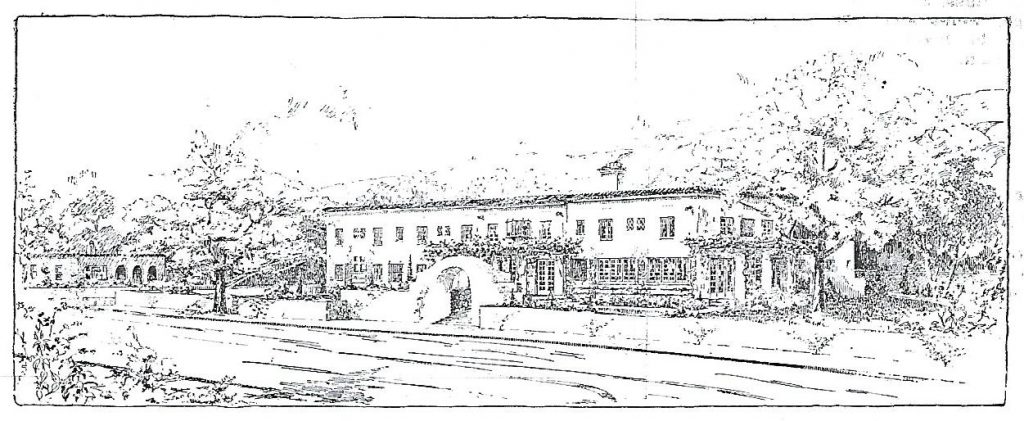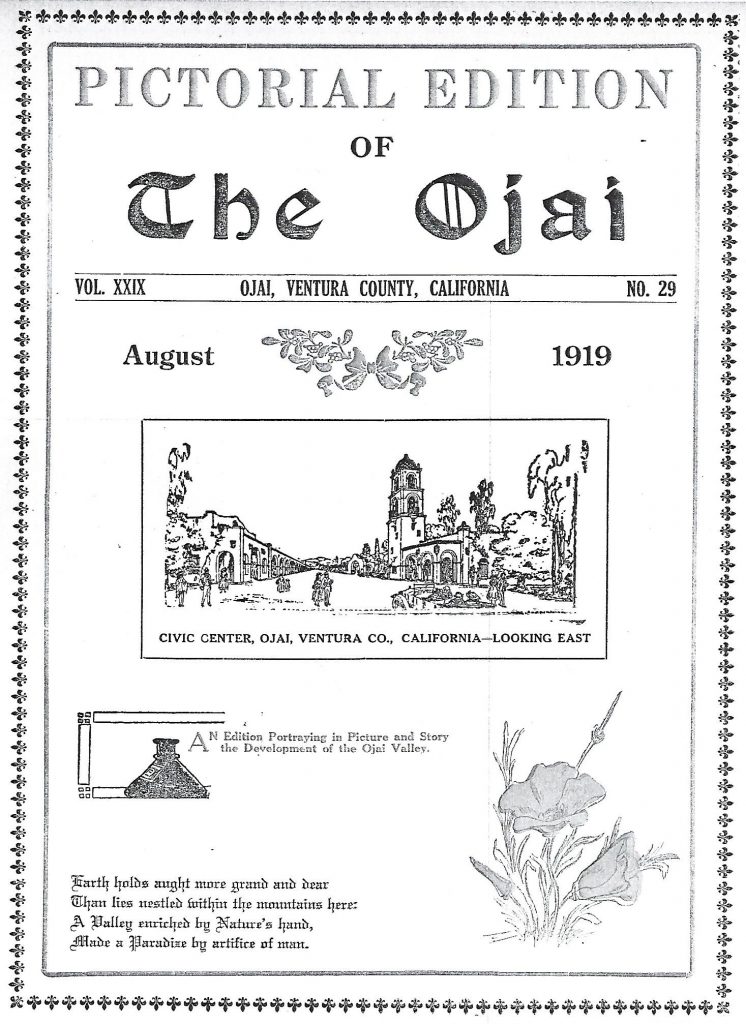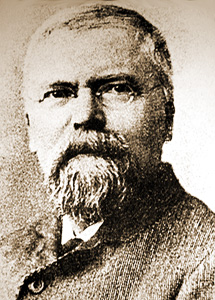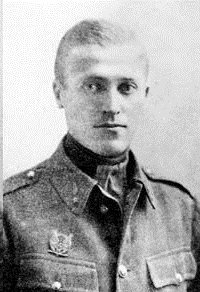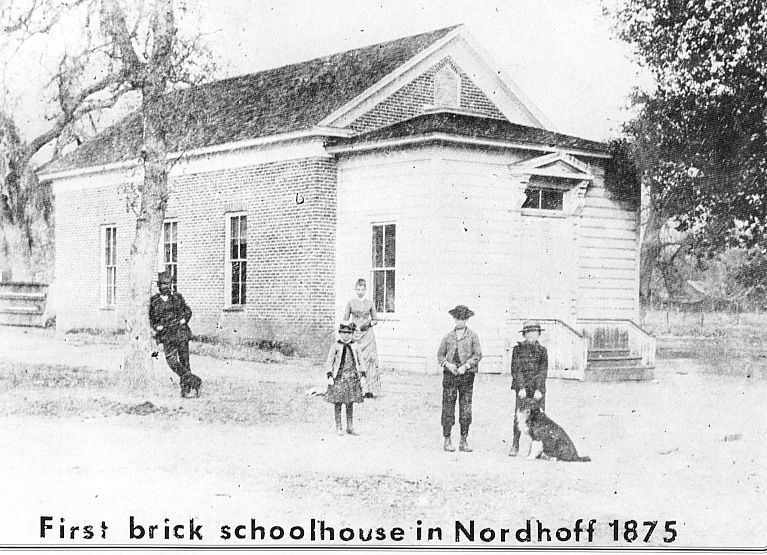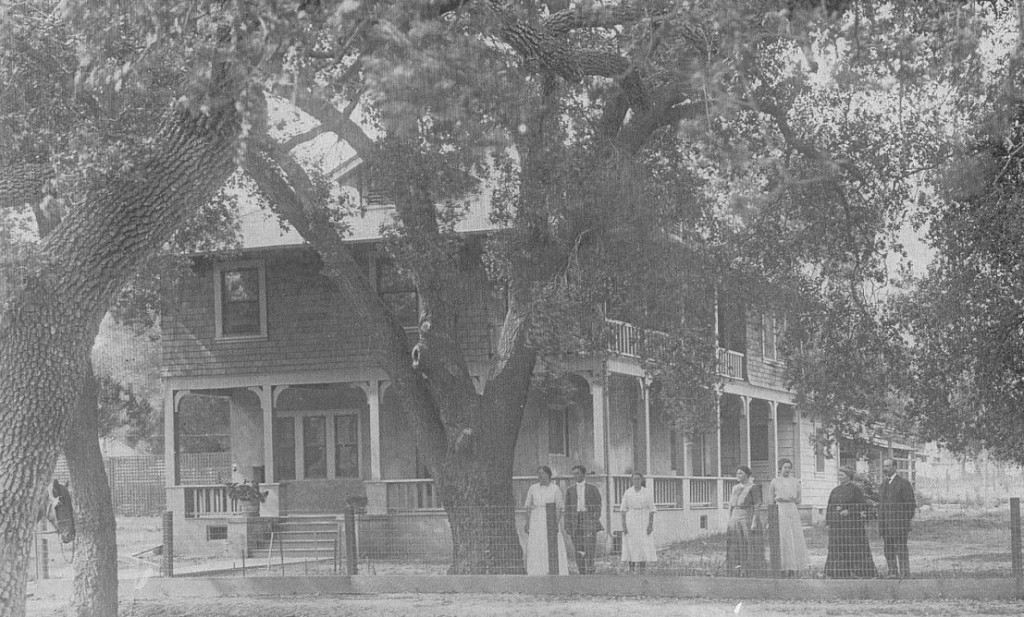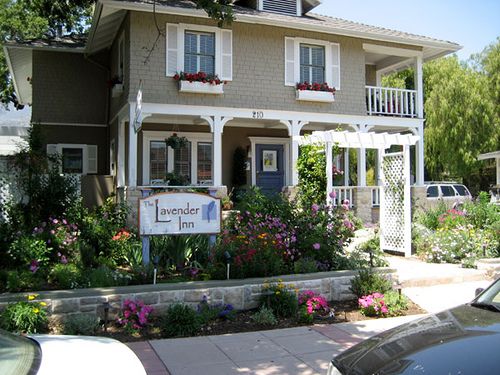The following articles were first run in “THE OJAI”. That newspaper is now “THE OJAI VALLEY NEWS”. The articles are reprinted here with their permission. The author(s) are unknown. Dates of editions in which each article was run are provided at the beginning of each article. The articles are about the “Hotel El Roblar” (formerly named “The Ojai Tavern”, “The Ojai Valley Inn”, “The Oaks at Ojai” and others). The 1919 drawing of the “The Ojai Tavern” (now, “Hotel El Roblar”) was added by the “Ojai Valley Museum”.
FRIDAY, FEBRUARY 28, 1919:
THE OJAI TAVERN
Architect Mead, upon whom rests the honors and responsibility of preparing the plans for The Ojai Tavern, soon to be erected, met Wednesday with the directors of the hotel company and tendered to them the complete plans and specifications for the proposed handsome structure.
The directors have asked a few contractors for estimates of cost of construction, and it is apparent that satisfactory information along that line was gained, as the treasurer was instructed to call for the payment of 40 per cent of the stock subscribed, or so much as the law requires of such corporations prior to proceeding to carry out the enterprise.
J. J. Burke, Boyd E. Gabbert and S. D. Thacher have been named as the building committee and work will proceed without unnecessary delay.
Hur-ray!
FRIDAY, MARCH 28, 1919:
OJAI TAVERN NOW NEARING THE REALITY
On Saturday bids were opened for the construction of the new civic center hotel, soon to be erected, and to be known at the “Ojai Tavern”.
Three bids were submitted, but as yet the hotel company has not made public the figures, the matter of accepting the lowest bid having been taken under advisement.
Before another issue of “The Ojai” goes to press, we have every assurance that all details will be finally settled and the work of construction will begin early in April.
FRIDAY, JANUARY 9, 1920:
“El Roblar” is Name of New Hotel
After some six of eight months “reconnoitering, conflabbing and gestulating”, the directors of the Ojai Valley Hotel Company have finally and definitely decided on a permanent name for the civic center hotel. It is “EL ROBLAR.” the name is of Indian origin and signifies “a cluster of, or among the white oaks.”
The Ojai is pleased that this matter has finally been settled for we started out calling it “The Ojai Tavern,” then it was changed to “The Ojai Valley Inn,” but this last title did not last long, and was cast aside for the more euphonious title of “El Roblar.”
The last carload of furniture for the new hostelry arrived Wednesday and was hauled to the hotel Thursday and is now being placed in order and the official and formal opening of the hotel will take place within the next ten days or two weeks.
FRIDAY, JANUARY 30, 1920:
El Roblar Hotel Opens Its Doors
Hotel El Roblar, the valley’s new hostelry, opened its doors to the general public informally, Wednesday evening, and although not fully ready Manger Roach took care of the large number of guests that “knocked” for admission, in a very happy and pleasant manner.
The opening has been delayed far beyond calculations and plans, owing to the non-arrival of much of the furnishings, which are still “in transit”, and Mr. Roach has been forced to gather up substitutions here and there as best he could, in order to accommodate his patrons.
The supper menu for the opening evening was:
Soup, Cream of Green Peas, Olives, Celery, Roast Lamb, Fried Chicken Southern Style, Red Currant Jelly, Fruit Salad, Potatoes, Posse Duchesse, Garden Peas, Saute Bananas, Raspberry Jelly Mound, Peach Pie, Coffee, Tea, and Milk.
The date for the formal opening has not yet been set, but it will be in the near future, and will be one big evening in Ojai.
The stationery for the hotel, letterhead, envelopes, menus, etc., printed in four-colors, was executed at The Ojai printing office, and they are what critics say, “about the niftiest ever produced of their kind.”
FRIDAY, FEBRUARY 6, 1920:
NEW MANAGER FOR THE EL ROBLAR
W. A. Roach, who leased the new Ojai hostelry, “El Roblar,” before its construction, has relinquished his interests, and Chas. A. Cooke succeeds him as lessee, and has assumed its management.
Mr. Cooke has long been identified with Southern California hotel enterprises, and as directing head has been highly successful, both financially and as a popular host.
For some time he was president of the Hotel Men’s Association, and more recently was manager of El Encanto at Santa Barbara.
He has opened El Roblar under most encouraging conditions, the patronage being excellent, with many reservations listed, among them one-half of the lower floor, the occupying party to arrive soon from Santa Barbara.
———————
Beginning February 5th the following rates will prevail at the Hotel El Roblar:
Breakfast, ……………………………………………………………….$1.00
Luncheon, ……………………………………………………………….$1.50
Dinner, …………………………………………………………………….. $1.50
Special Sunday Dinner, ………………………………………..$2.00
Special Sunday eve. Supper, …………………………….$1.50
Daily and weekly rated on application.
FRIDAY, FEBRUARY 13, 1920:
The Popular El Roblar Entertaining Many Guests
Among the week-end guests at the Valley’s new and popular hotel, El Roblar, were the following:
Mr. and Mrs. Edward Carrington, Mrs. Steward, William Gammell, from the Ambassador, Santa Barbara; Mr. and Mrs. William Sweet, Boston; Mr. and Mrs. L. W. Ballon, Woonsocket, R. I.; Mr. and Mrs. Harold Chase and boys of Santa Barbara; Mr. and Mrs. Chas. P. Austin of Santa Barbara; Mrs. McCrabb and Miss Norton, Seattle, Wash.; Mr. and Mrs. Francis Farnsworth, W. J. Farnsworth, Santa Barbara; Mr. and Mrs. D. Bryant Turner, Colorado Springs; and Mr. and Mrs. E. D. Wetmore, Santa Barbara; J. J. Bayler and family of Chicago.
The hotel has had a large run of patronage all this week, many of whom have engaged quarters for an indefinite time.
FRIDAY, MARCH 5, 1920:
Ojai Hotel Company Hold Annual Meeting
The first annual meeting of the stockholders of the Ojai Hotel Company, owners of the El Robalr, was held at the office of the secretary of the Company in the Ojai Realty Company’s office, Wednesday forenoon. The report of the past year’s activities and accomplishments was presented and read, and proved quite pleasing.
The men who did most of the real work in organizing the company and in the preliminary work of getting the hotel constructed, were congratulated.
The following officers and directors were elected for the ensuing year:
S. D. Thacher, president; D. A. Smith, vice president; B. E. Gabbert, secretary; E. W. Wiest, treasurer; E. L. Libby, Geo. Holsten, J. J. Burke.
FRIDAY, AUGUST 13, 1920:
El Roblar to Open Tomorrow August 14th
The many friends of the El Roblar Hotel will be pleased to learn that the new lessees, Messrs. Flander and Frank Barrington, will open that popular hostelry to the public on tomorrow noon, August 14th. A cordial invitation is extended the public to dine at the El Roblar whenever opportunity permits.
